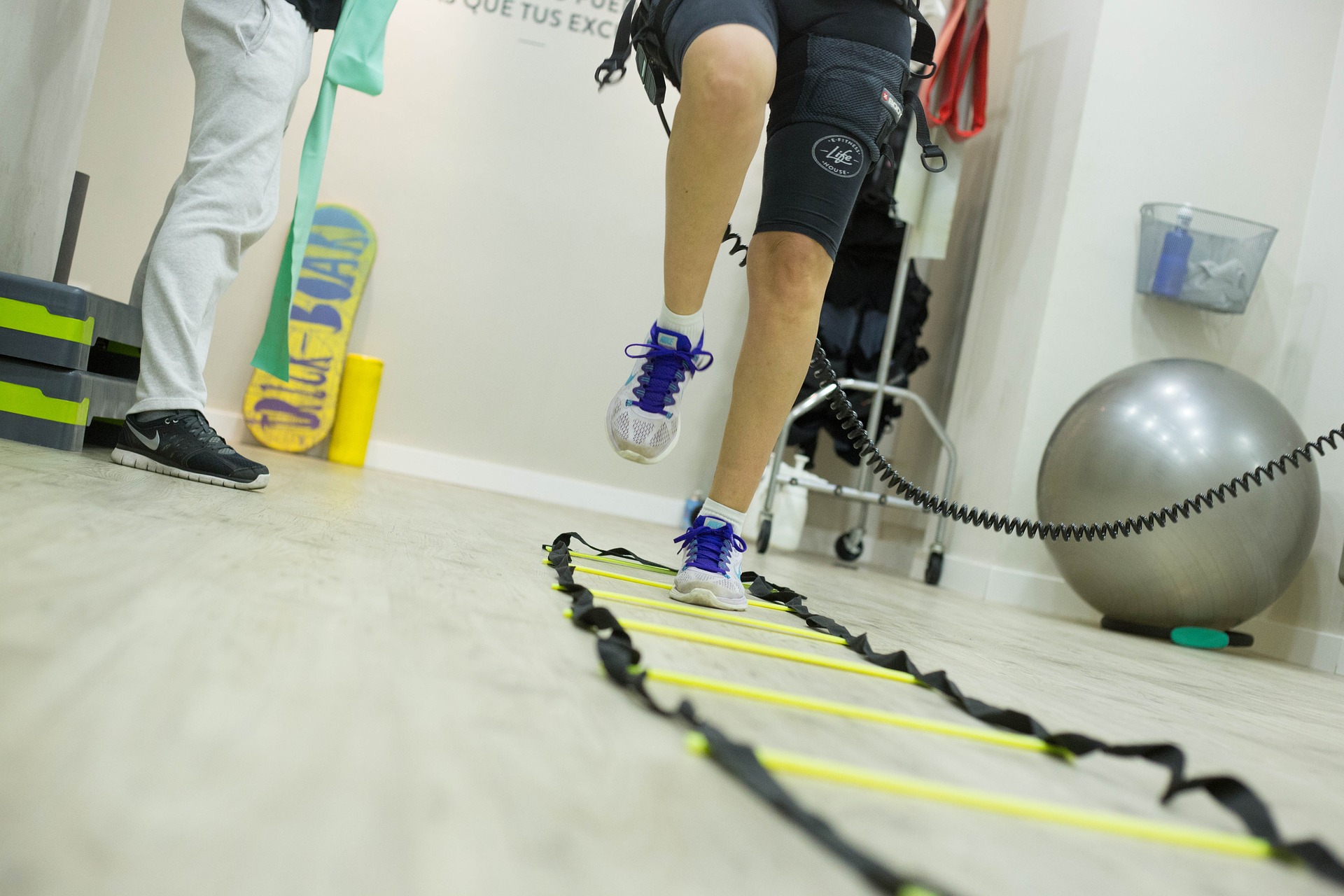Início Impacto da cirurgia bariátrica no metabolismo do cálcio
Saúde Pública
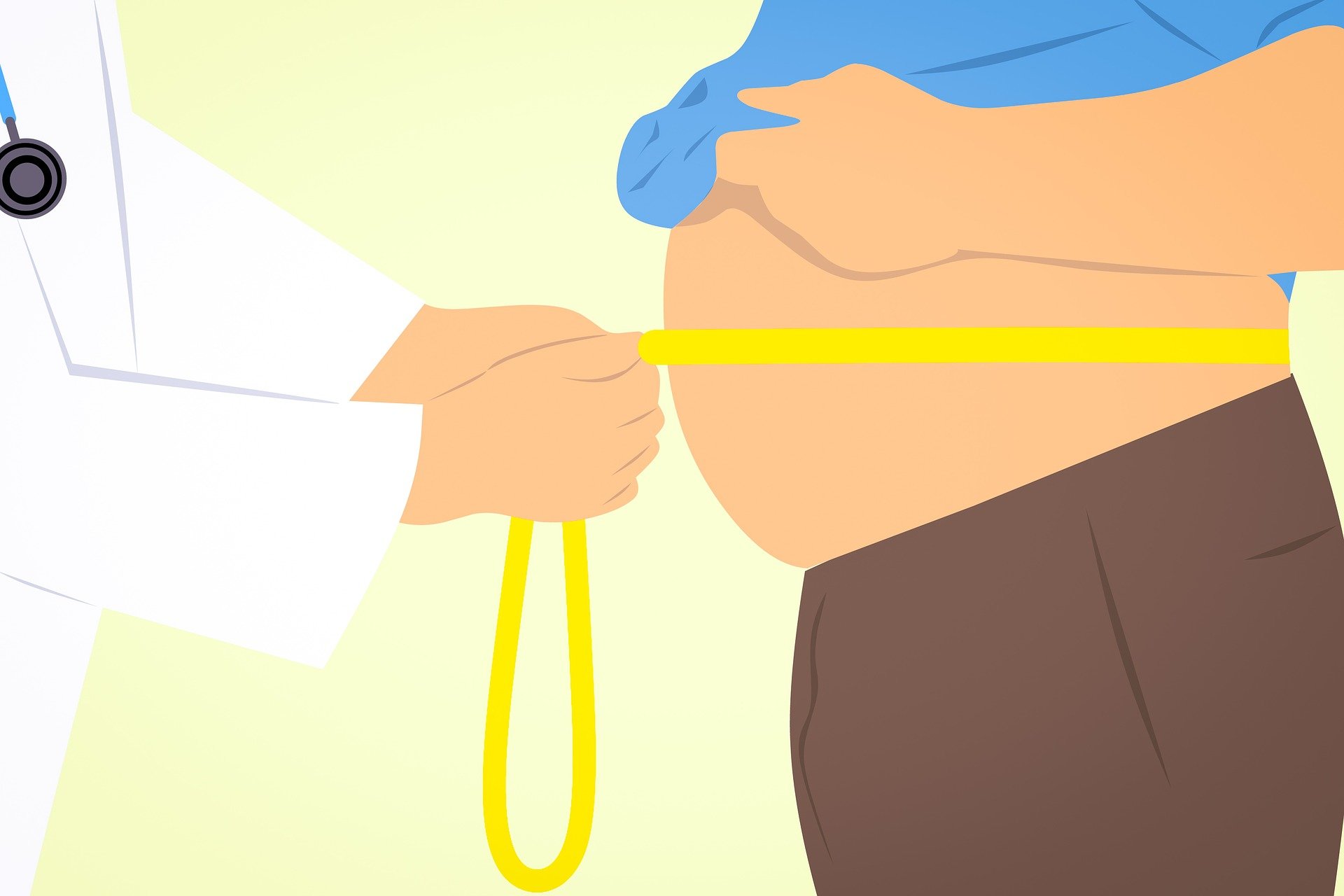
Impacto da cirurgia bariátrica no metabolismo do cálcio
Resumo:
Introduction: Due to the high prevalence of obesity that affects the whole world, bariatric surgery has been gaining strength and space in relation to the types of conventional treatments, mainly by individuals who have to lose weight, and who have not been successful with diet alone. However, these procedures cause a significant decrease in the absorption of some nutrients. Highlighting the serum calcium concentrations. Thus, a bibliographic research was carried out with the objective of reporting the main complications caused by calcium deficiency in individuals undergoing bariatric surgery. Review and discussion: The BIREME database was used to search for articles related to the theme of the past 10 years in Portuguese and English. At the end, ten articles were included, which demonstrated hypocalcemia in patients undergoing bariatric surgery, due to low calcium intake and absorption, leading to changes in parathyroid hormone and an increase in greater chances of developing bone fractures. Final remarks: Patients undergoing bariatric surgery show a decrease in calcium levels, so it is necessary to find out how to maintain these adequate levels.
Keywords: Bariatric surgery, Calcium, Hypocalcemia, Fractures.
Expandir Resumo
Acessar Texto Completo

Tratamento de câncer em gestantes: Estudo de Revisão de Relatos de Casos
Resumo:
Introduction: Cancer is a group with more than 100 pathologies, which have disordered growth, invading tissues and organs, and are named according to the type of cell and tissue in which they start. The diagnosis of cancer during pregnancy is considered a delicate situation, because it generates suffering for the patient and family and challenging health professionals because it is a rare event. The work aims to present the pharmacological treatments and conducts adopted in cancer in pregnant women, through articles of case reports. Review: The research was conducted based on searches in the Pubmed and Scielo databases, with the keywords in English, pregnancy, cervical cancer, vulvar cancer, ovarian cancer and endometrial cancer, and their respective terms in Portuguese and Spanish. Being the search period from May 1, 2019 to February 28, 2020, articles published between 2005 to 2019 are considered valid, using abstracts and research results from 8 case reports as inclusion and exclusion criteria. Discussion and final considerations: It suggests that the treatment adopted, follow the same criteria as non-pregnant women, however the little literature makes it difficult to choose the best therapy and demonstrates the need for a multidisciplinary team, as well as the importance of the pharmacist in choosing the most appropriate therapy, according to the pregnant woman's staging.
Keywords: pregnant woman, cancer, chemotherapy, case reports.
Expandir Resumo
Acessar Texto Completo

A saúde dos bombeiros militares no combate a COVID-19 no Brasil
Resumo:
Introduction: The Firefighter Military, in the exercise of the activity, puts his life at risk to save the lives of others or to defend public and private assets of society. And this has been the case since the emergence of Covid-19 in Brazil, with restrictive measures, isolations or actions to avoid contamination of these professionals and the population. And it is inevitable that some firefighters are infected, after all, both combatants and those who support the front line are at risk. Objective of the study is to describe the importance of military firefighters in combating the pandemic, addressing contamination rates and preventive measures adopted by some Brazilian states. Review: The theme it is of great relevance, since Covid-19 is a highly potent virus that has been causing one of the most serious public and economic health problems on a global scale. The methodology was based on a literature review, using databases from Scielo, PubMed and the Virtual Health Library (VHL) and Science Direct, published until September 2020 in Brazil. Discussion: Due to the high incidence and mortality, the effects of Covid-19 can be felt for a long time and emotional support measures with psychologists and other forms of medical and social assistance to military firefighters are essential and must be carried out in all Brazilian states. Final Considerations: According to the various sources used in this study, it can be seen that living with Covid-19 is adapting to a new lifestyle to prevent the recurrence of the disease until the vaccine appears for the population.
Keywords: firefighters, Covid-19, public health.
Expandir Resumo
Acessar Texto Completo

A bandagem elástica como recurso terapêutico na motricidade orofacial: um estudo bibliográfico
Resumo:
Introduction: The severity of muscle orofacial pain is related to the movements and functional activities of the muscles involved, orofacial dysfunction is a common clinical characteristic that is associated with disorders and dysfunctions of the masticatory musculature. Currently, health professionals have used several resources to assist in therapy, one of these resources is the elastic bandage as a therapeutic resource for orofacial motricity therapy, the present study proposes to investigate the effectiveness of elastic bandage as a therapeutic resource in orofacial motricity. Methodology: a bibliographic survey of national and international scientific articles published between 1999 and 2020 was carried out, which report on the use of elastic bandage as a therapeutic resource in speech therapy. Discussion: Elastic bandages are applied over the muscle to provide assistance and support, preventing excessive contractions, improving the range of motion, facilitating venous and lymphatic return. Final considerations: Through the data collected, this study was supported by the most diverse research sources, and it is possible to understand the principles and objectives of the use and methods of applying elastic bandage as well as reviewing the literature on the complexity of orofacial motricity.
Keywords: Myofunctional therapy, athletic, facial adjustment.
Expandir Resumo
Acessar Texto Completo
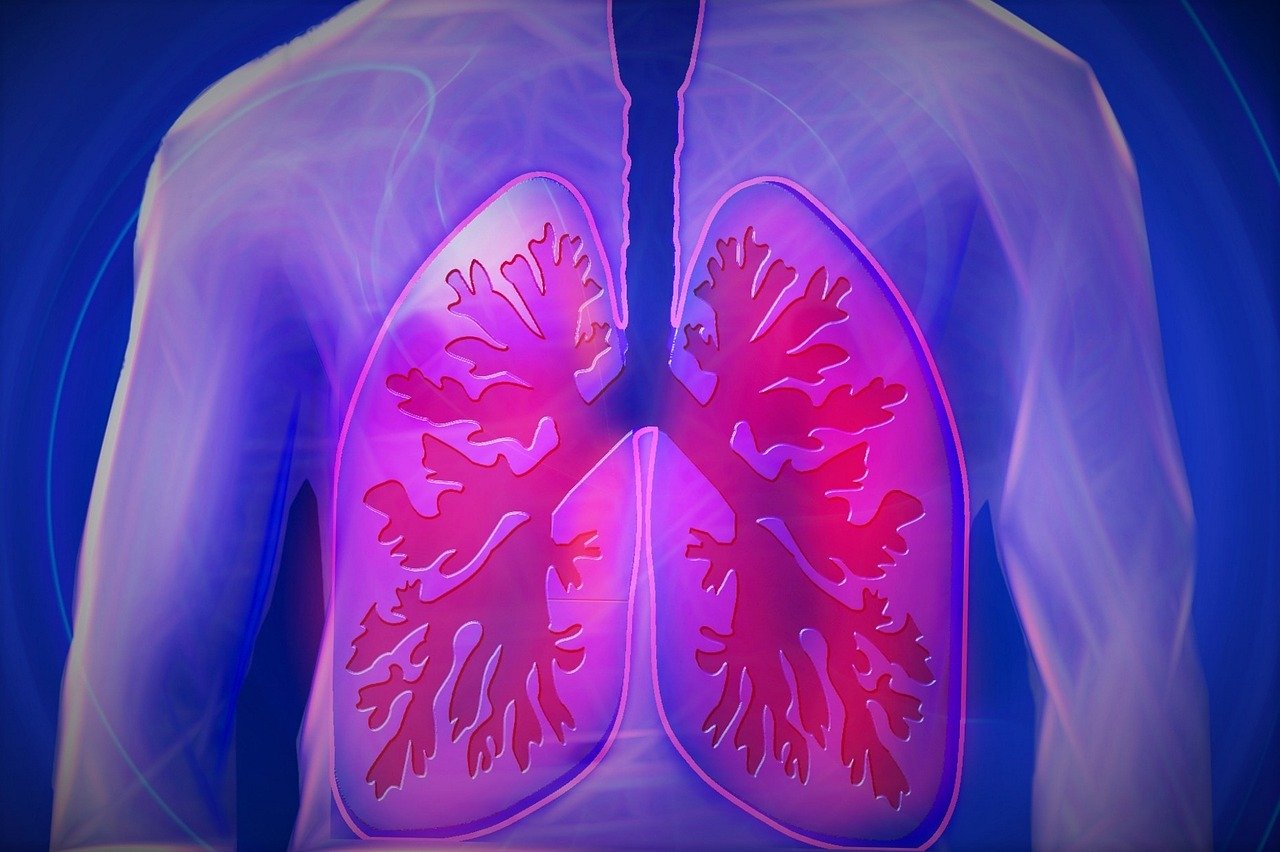
O impacto do tratamento do cliente com tuberculose internado em uma unidade hospitalar: uma revisão de literatura
Resumo:
Introduction: Despite being treatable and curable, tuberculosis can evolve to the severe form that requires hospitalization of the client for an effective recovery, especially when the diagnosis of compulsory diseases is evidenced. The study aims to discuss in the literature the respiratory isolation related to the client with tuberculosis in the hospital environment. This is a literature review study, with a qualitative approach, which had the following research question: How the literature discusses respiratory isolation related to the client with tuberculosis in the hospital environment. The analyzed studies allowed the identification of the thematic unit “Respiratory isolation related to the client with tuberculosis in the hospital environment” and the following categories: 1 The view of the cost of the client with tuberculosis in the hospital environment; 2 Care for clients with tuberculosis in the hospital environment. Review and discussion: To define the search, the inclusion criteria were used: articles available in Portuguese, in the time frame from 2014 to 2018, on the Virtual Health Library website, with the descriptors: Tuberculosis; Respiratory failure; Hospitalization and from 2012 to 2018 in Google Scholar, with the study them. Final considerations: It highlighted the importance of primary care, so that the patient with tuberculosis does not complicate, as this in the hospital environment increases hospitalization costs, as well as may require unconventional treatments for the disease, either due to the multidrug resistance or the individual's aggravated condition.
Keywords: client, hospitalization, respiratory failure, isolation, tuberculosis.
Expandir Resumo
Acessar Texto Completo

Cuidados farmacêuticos na adesão da terapia medicamentosa oral em pacientes onco-pediátricos
Resumo:
Introduction: In 2018, childhood cancer in Brazil, according to an INCA estimate, represented 12,500 new cases of cancer and 2,704 deaths. Oral chemotherapy is increasingly used, consisting mainly of reducing hospitalization costs and the route of administration, avoiding the need to use the intravenous route. The support of family, friends and caregivers, as well as pharmaceutical guidance are very important so that the onco-pediatric patient can have a good adherence to oral drug therapy. This study aimed to promote a bibliographic review of the literature in order to identify the main problems related to adherence to oral drug therapy in onco-pediatric patients and pharmaceutical care in guiding the use of drugs in oral therapy. Review: This research was carried out through the review of scientific articles in the databases of electronic portals SciELO, Google Scholar, PubMed related to adherence to oral drug therapy, onco-pediatric patients and pharmaceutical guidance. For this, the keywords were used: “adherence to oral medication”, “pediatric cancer”, “pharmaceutical guidance” and their equivalents in a foreign language (English), which resulted in a total listing of 16 articles. Discussion and final considerations: Adherence to oral therapy is one of the forms of treatment of the disease, some factors can influence adherence, such as: the patient's behavior, socio-demographic factors such as age, education and level of knowledge of children, especially in the early stages of life, guidance and management in the care of pediatric onco patients is necessary. Follow-up, guidance and monitoring by the trained professional are essential for the care of pediatric cancer. Certainly problems related to adherence to oral drug therapy in onco-pediatric patients, influence the response to treatment and the success of therapy.
Keywords: adherence to oral medication, pediatric cancer, pharmaceutical guidance.
Expandir Resumo
Acessar Texto Completo

Relato reflexivo a partir de atividades desenvolvidas em uma unidade de saúde da família no interior da Bahia
Resumo:
Introduction: Throughout my journey I was able to discover an interest, in permanent education through the interaction and work that I developed in Primary Health Care. Through these processes of activities developed in daily life, I used the constructive methodology as my ally, in favor of educational movements case report: To demonstrate the results, I decided to develop a reflective report about my daily work, and I will quote excerpts from my cartographic diary, and I will talk about the development of certain activities experienced. Discussion: In my daily work, I was able to observe the existing relationship with EPS in motion, the way the learning process takes place in the educational space without being a cast. When observing the need for knowledge of the users of the unit and the exchange of information regarding breastfeeding obtained in dialogue.
Keywords: breastfeeding, popular education, continuing education
Expandir Resumo
Acessar Texto Completo

Sentimento de felicidade em idosos: o estudo AGEQOL
Resumo:
Introduction: In Latin America we observe the growth of the share of elderly people in the population. In Brazil, the age group of people over 65 grew from 3.5 in 1970 to 5.5% in 2000; and the 2010 census counted more than 20 million elderly people aged 60 and over, and this corresponds to 10.78% of the population. In this study, we aim to identify the factors that influence the feeling of happiness in the elderly. Materials and methods: The sampling process was carried out in two stages: in the first, census sectors were selected and in the second, domiciles were selected under the criterion of sharing proportional to the size of each sector, being interviewed resident individuals with 60 years old and over, regardless of marital status or degree of kinship. The absolute and relative frequencies for all variables in relation to happiness were calculated using the chi-square test, with an acceptable margin of error of 5%. Then a logistic regression was performed with the variables that reached statistical significance below 0.25 (p<0.25). The final adjusted model kept only the variables that reached the level of 5% of statistical significance (p<0.05). The effect of the complex sample design was considered in all analyses performed using the statistical software SPSS version 18.0. Results and discussion: Participated in the study 2052 elderly, with ages ranging from 60 to 106 years. Happiness was influenced by: age, gender, schooling, marital status, religion, caregiver, ABVD, AIVD and cognitive deficit. Final considerations: The study showed that happiness in elderly can be influenced by a series of factors and each one of them must be observed with enough attention in order to improve the quality of life and well-being of this population.
Keywords: well-being, active aging, happiness, elderly.
Expandir Resumo
Acessar Texto Completo
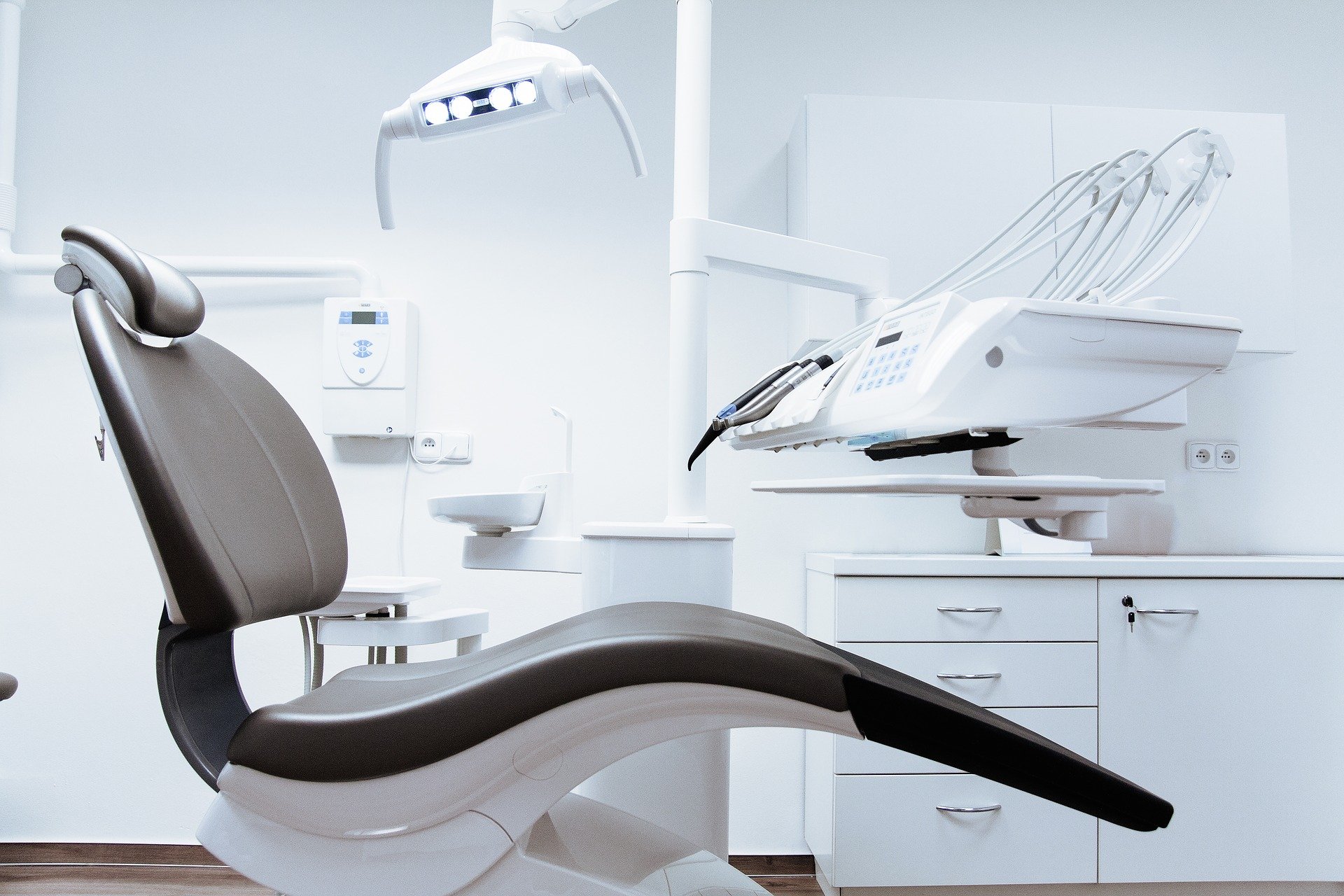


Uso de antimicrobianos em pacientes oncológicos em cuidados paliativos
Resumo:
Introduction: Cancer is characterized by disorderly cell proliferation of genetic origin and has been a challenge for medicine for many centuries. Therapeutic approaches depending on the physiological reserves and the type of cancer that affects the patient can compromise important organic systems, and some patients do not respond adequately to the treatment, initiating palliative care. The use of antimicrobials at this stage is questionable due to the real benefits to patients when considering only increased survival. However, the evidence points to the use of antimicrobials in order to improve the quality of life of patients, with symptom control and the promotion of comfort. Objective of this work was to carry out a systematic review of the literature on the use of antimicrobials in cancer patients in palliative care and its adverse reactions and benefits for comfort and treatment of symptoms. Review and discussion: International literature review study in international databases (PubMed and ScienceDirect) by 2 independent researchers with the proposal to approach the theme in depth and respond to the proposed objective. From the adopted methodology, 23 articles were selected for the preparation of the review article and adverse reactions are reported in studies related to the use of antimicrobials in cancer patients, however, they were not described as the main objective of the studies and from the point of view of promoting comfort and symptom control the use of antimicrobials in the studies showed favorable results, however, with subjective responses that demonstrate the need for protocols and evaluation scores. Final considerations: Patients in palliative care and use of antimicrobials have important dilemmas in the management of end-of-life care that need to be thoroughly evaluated in relation to the benefits of the use and the presence of adverse reactions that can cause losses at this critical moment.
Keywords: antibiotic, antimicrobial, cancer, infection, palliative care, adverse reaction.
Expandir Resumo
Acessar Texto Completo

Utilização de enxerto ósseo autógeno na reabilitação dos maxilares
Resumo:
Introduction: The bone tissue loss process can occur due to several factors, causing functional, aesthetic and psychological problems in the patient, making rehabilitation treatment difficult using dental prostheses. In this context, this article aims to conduct a scientific review of the literature, pointing out the advantages and disadvantages of autogenous bone grafts, elucidating the main indications for dentistry. Review: The recovery of edentulous areas using autogenous bone grafts plays an important role in dentistry, providing an adequate prognosis for the patient, as long as the treatment is well elaborated within the ideal conditions of bone quantity and quality. The intraoral donor areas are made up of the mentonian symphysis, branch and maxillary tuberosity. The skull cap, iliac crest, ribs, tibia and fibula are the extra-oral donor areas. The intraoral donor areas exhibit good biological properties in the reconstruction of small and medium bone defects, corresponding to approximately four dental units. In cases of extensive bone regeneration, the use of extra-oral donor areas is indicated, with the iliac crest being the most commonly used, due to the good bone quantity it offers. Final Remarks: The use of autogenous graft has the advantages of its excellent biocompatibility between the donor and recipient areas, enabling bone regeneration techniques to be performed in a dental office with the use of local anesthesia, showing a low cost and a high level of aesthetic acceptance for the patient. However, in extensive defects, surgery should be performed in a hospital environment under general anesthesia with a multidisciplinary team, presenting a high cost.
Keywords: autogenous bone graft, bones substitutes, oral rehabilitation.
Expandir Resumo
Acessar Texto Completo

Aspectos atuais na formação e preparação dos profissionais da saúde frente aos cuidados paliativos
Resumo:
Introduction: Palliative care (PC) behaves like a philosophy that promotes quality of life for patients in their stages of progressive and terminal illness, providing support in the physical, mental and spiritual dimensions, without giving up the individual attention of each individual. The objective of this study is to present, through an integrative literature review, the performance of health professionals in palliative care, demonstrating the importance of a multidisciplinary team in this area. Review: Humanization in palliative care consists of meeting the needs of the patient, whether he is diagnosed with a terminal chronic disease or not, thus, humanization and palliative care are related in concept and practice, and must be initiated from the initial stage of the disease to its advanced stage. When it comes to the composition of the team of professionals, it must contain doctors, psychologists, nurses, physiotherapists, social workers and occupational therapists, as these professionals assume specialized care with a focus on patient care individually, as each individual reacts differently. different to a therapeutic one, with short or long term interventional actions. Final Remarks: The finitude of life process requires health professionals to be prepared not only for practical competence. However, there are signs of absence of teaching and pedagogical approaches in the theme of PC, addressing this theme during the graduation of the student in the health area, will add fundamental issues, both for the professional and personal scope, making it empathic to deal with patients facing the end of life, offering respect and the necessary care.
Keywords: palliative care, physiotherapy, teachers, teaching.
Expandir Resumo
Acessar Texto Completo

A utilização de tecnologias virtuais no planejamento de cirurgias ortognáticas
Resumo:
Introduction: Orthognathic surgery aims to correct dentoeskeletal deformities, improving aesthetics and function of the patient. Therefore, it is necessary to carry out an accurate planning of the treatment to be performed. The aim of this study is to present, through an integrative literature review, the advantages of using virtual technologies in planning orthognathic surgeries compared to conventional methods. Review: Virtual planning software is useful in predicting results, accuracy and reducing working time, both in planning and in surgery. The three-dimensional (3D) planning allows the incorporation of the third dimension, making it possible to increase the anatomical structure on the computer screen and interact with the bone structure, without changing the accuracy of the images and measurements. Thus, to perform orthognathic surgery, it is necessary that the surgical planning is well elaborated. With regard to the virtual planning method, the advantages of its use stand out, the reduced working time during planning and execution, as well as the preparation of surgical guides that assist in the procedure and satisfactory evaluation of postoperative results. Final Remarks: For an orthognathic surgery to be performed, it is necessary that the surgical planning be well elaborated. With regard to the virtual planning method, the advantages of its use stand out, reduced working time during planning and execution, clinical feasibility, better precision in diagnosis and treatment plan, data storage, preparation of surgical guides that assist in the procedure and satisfactory evaluation of postoperative results.
Keywords: orthognathic surgery, surgery, computer-assisted, orthognathic surgical procedures.
Expandir Resumo
Acessar Texto Completo
Perfil clínico epidemiológico do câncer gástrico: revisão integrativa
Resumo:
Introduction: Stomach Cancer (or Gastric Cancer) is the growth of abnormal cells in the organ of this digestive system and can occur anywhere in its extension. Much of this type of tumor occurs in the mucous layer (the inner lining layer), appearing in the form of irregular small lesions with ulcerations (rupture of the mucous tissue) - characteristics of cancers or malignant tumors. Objective: To characterize the clinical epidemiological profile of gastric cancer in patients with the disease. Revision: It is an integrative review developed in five stages: careful search in the LILACS and MEDLINE databases; selection of articles, dissertations, theses and monographs according to the inclusion and exclusion criteria of the proposed theme; analysis of articles, dissertations, theses and monographs, which will be suitable in categories according to the approach; year of publication, which will be the type of study and journal in which it was published; construction of the article and public defense of it. Results: In this integrative review, 04 articles were analyzed that met the inclusion criteria previously established. Final considerations: The research showed the highest incidence of gastric cancer in males between the ages of 40 and 60, but this incidence has been decreasing, according to some recent articles, the choice of healthy eating habits and the decrease in consumption of alcoholic beverages and smoking habits, are favorable factors for the decline of this pathology.
Keywords: adenocarcinoma, stomach cancer, feeding behavior, stomach neoplasms, health promotion, digestive system.
Expandir Resumo
Acessar Texto Completo
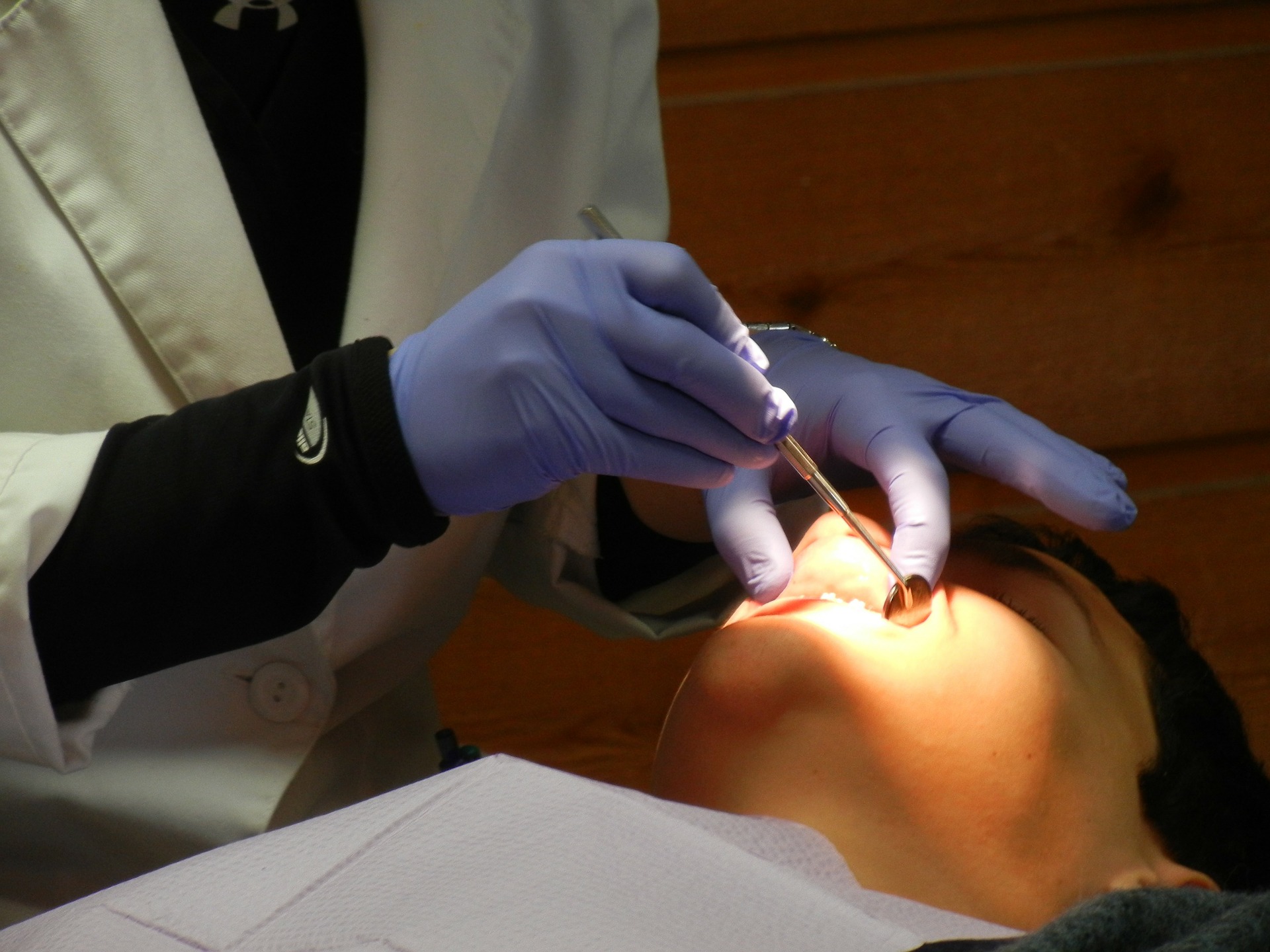
A importância da avaliação dos sinais e sintomas da disfunção temporomandibular para a odontologia
Resumo:
Introduction: Temporomandibular dysfunction (TMJ dysfunction) encompasses a set of signs and symptoms, involving the masticatory muscles, temporomandibular joint, as well as associated structures, such as teeth and nerves. The aim of the present study is to address, through a bibliographic review of the literature, the main signs and symptoms of TMJ dysfunction, aiming to establish a more accurate diagnosis, thus favoring a better quality of life for patients. Review: TMD etiology has a multifactorial character, being associated with muscle hyperactivity, trauma, emotional stress, malocclusion, in addition to other factors such as pathologies, perpetuating this condition. The most frequent signs and symptoms evaluated in the literature were limited mouth opening, pain during chewing, pain in the ear and temporomandibular joint, and clicks in the joint. The etiology of temporomandibular disorders is still very controversial and discussed among health professionals, such as dentists, doctors and physiotherapists. Final Remarks: It is important to note that, in view of the studies observed, that young adult patients were the individuals who were more likely to develop disorders in the temporomandibular joint, but among this group, women were the ones who most presented symptoms, especially pain, and these findings may be associated with significant hormonal variations, especially at puberty.
Keywords: temporomandibular joint, parafunctional habits, temporomandibular dysfunction.
Expandir Resumo
Acessar Texto Completo

Principais fatores de riscos relacionados a queda em idosos e suas consequências: revisão integrativa
Resumo:
Introduction: With the increase in life expectancy over time, there is an increase in falls resulting in fracture of the femur among the elderly. Objective: identify the main risk factors related to falls in the elderly and their consequences, so that both the government and society are aware of these risks and their consequences. Revision: As methods, an integrative literature review was carried out through the databases, VHL and SciELO using as descriptors: '' Elderly '', '' Treatment '' and '' Femoral Fracture '' associated with the Boolean operator "AND" '. Discussion: As a result, we obtained 8 publications that fit the theme, 100% of the publications developed through field research, all articles were included in this integrative review. Final considerations: t is concluded that the risk factors related to falls in the elderly and their consequences are associated with several factors, such as: age, health status of this elderly person before the fracture, among others, adding to the high effective cost of treatment and the lack a strict hospitalization protocol and surgical procedure.
Keywords: accidental falls, risk factors, femoral fractures, elderly, public health, patient safety.
Expandir Resumo
Acessar Texto Completo
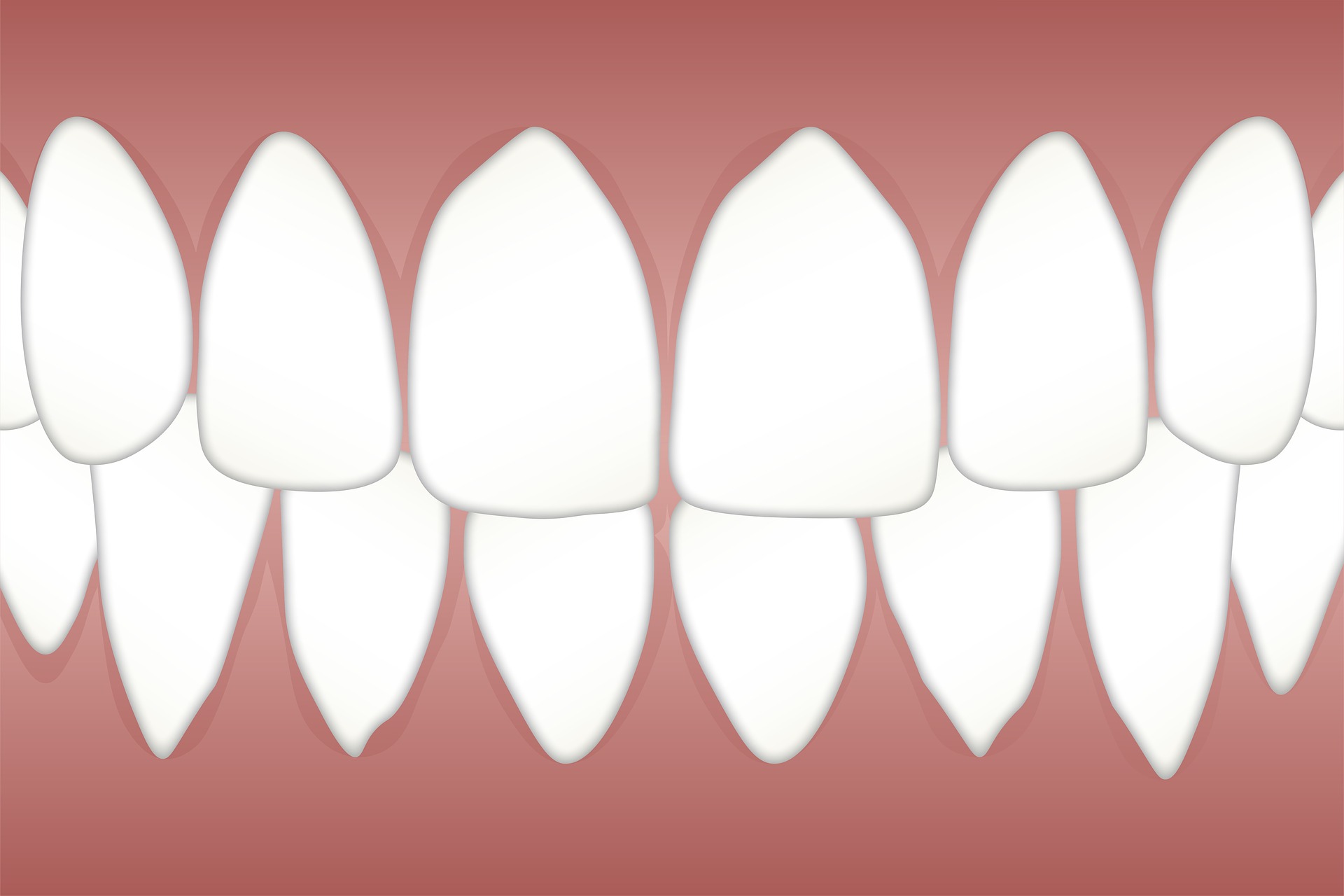
O papel do sistema imunológico na patogênese da doença periodontal
Resumo:
Introduction: Periodontal disease is characterized by a disturbance of the microbiota present in the oral environment, causing an immune response in the individual, thus affecting the protection and support tissues of the periodontium. Therefore, this article aims to elucidate the role of the immune system in the pathogenesis of periodontal disease. Review: The immune system uses specific mechanisms promoted by cells, such as lymphocytes, macrophages, monocytes, mast cells and neutrophils, as well as mechanisms associated with specific molecules, characterized as anti-inflammatory and pro-inflammatory cytokines, prostaglandins, proteinase inhibitors and metalloproteinases (MMPs), which together, being present in the active phase of polymicrobial periodontal disease. The progression of periodontal diseases is induced by an inflammatory process that gradually leads to its destruction, causing tooth loss. The innate immune response actively participates in the development of periodontal disease and the acquired immune response is related to disease progression and destruction of the alveolar bone. On the other hand, the humoral immune response is shown to be related to the protection of periodontal tissues, with positive results. Final Remarks: MMPs, TNF-alpha, RANKL and IL-1 have been reported as an effective tool for diagnosing the disease. Although there is a wide knowledge about the pathogenesis of inflammatory periodontal diseases, other studies still need to be carried out to better understand the cellular and molecular events involved in this pathology.
Keywords: periodontal diseases, immunity innate, adaptative immunity.
Expandir Resumo
Acessar Texto Completo

Ocorrência da tuberculose em profissionais da Saúde entre os anos 2014 e 2018 no Amapá
Resumo:
Background: Studies indicate that health professionals are highly exposed to the risk of infection with Mycobacterium tuberculosis, which causes tuberculosis. In the state of Amapá, there are still no studies specifically targeting tuberculosis in healthcare professionals. Objective: Survey on the occurrence of tuberculosis in health professionals in the state of Amapá between the years 2014 and 2018. Material and methods: It is a descriptive study with a quantitative approach in which secondary data obtained from the Notifiable Diseases Information System (SINAN) through the State Health Surveillance Superintendence (SVS) were used. The collected information was transferred to a spreadsheet in the Microsoft Excel 2010 application and then to the Tabwin program version 4.1.5, where the results were calculated and tabulated. Results and discussion: 28 cases of tuberculosis in health professionals were diagnosed between 2014 and 2018 in the state. The municipality of Macapá recorded the highest number of cases (85.7%), the predominant form was pulmonary (90%), female (68%) and brown race (68%) were more affected and the age group from 20 to 29 presented the highest number of cases. Conclusion: The importance of completeness in the data provided by SINAN and the importance of knowledge of the presence of tuberculosis in health professionals in the state are emphasized.
Keywords: epidemiology, Mycobacterium tuberculosis, health personnel, Amazon region, public health, Tuberculosis.
Expandir Resumo
Acessar Texto Completo

A importância do psicodiagnóstico em professores universitários portadores da Síndrome de Burnout
Resumo:
Introduction: The term burnout has an English origin, usually used to denote a state of energy depletion, associated with intense frustration with work situations. This article sought through an integrative literature review to address the psychodiagnostic aspects associated with burnout syndrome in university professors. Review: The burnout syndrome is a response to chronic work stress, being defined as a condition related to physical, emotional and behavioral exhaustion, usually related to the result of prolonged stress or frustration that are linked to work, considering that in the routine of There are psychosocial stressors linked to the essence of the job, as well as the organizational and social context in which they work. Discussion: For the enumeration of risk factors associated with the development of burnout, four dimensions are taken into account: the organization, the individual, work and society. What corresponds to the risk factors in the organization for the onset of the disease are the lack of autonomy, respect for team members and the boss, very strict institutional rules, overload of working hours. Final Remarks: The individual's peculiarity may be associated with minor or major in relation to the disease, and psychodiagnosis is understood as a systematic and time-limited process of knowledge about psychological functioning in specific situations.
Keywords: Burnout, teachers university, psychodiagnosis.
Expandir Resumo
Acessar Texto Completo


Distúrbios psíquicos iniciados na unidade de terapia intensiva
Resumo:
This work will seek to show through a literature review the mental disorders initiated in the Intensive Care Units, as well as the disorders provided to patients due to stress situations that occurred during the hospitalization period. Therefore, the research method used was the bibliographic review of cases, where it can be seen that family support is essential during the patient's recovery process. As a result, we sought to show the importance of observing the patient's behavior during the hospitalization process by the health team, in order to diagnose possible emotional disorders. Therefore, this study draws attention to the proper treatment of patients who acquired post-traumatic disorder after being discharged and also the controlled use of prescription drugs to combat the symptoms of mental disorders.
Keywords: mental disorders, intensive care unit, post-traumatic disorders.
Expandir Resumo
Acessar Texto Completo

Multidisciplinary team of oncology and the participation of speech therapy in the rehabilitation of patients subject to head and neck surgery
Resumo:
Introdução: As principais causas para o aparecimento de tumores na região da cabeça e pescoço estão relacionadas ao tabagismo e ao consumo de álcool. Enfatizando que o tabagismo é o maior fator de risco para o câncer de cabeça e pescoço, bem como câncer de pulmão e esôfago. Entre as neoplasias mais comuns da cabeça e pescoço estão as localizadas na cavidade oral, faringe e laringe e, de acordo com o grau dessas lesões, as ressecções podem ser totais ou parciais e frequentemente associadas à quimioterapia, radioterapia ou mesmo por ações isoladas. Funções como mastigação, deglutição, fala e voz acabam sendo comprometidas e são essenciais para a sobrevivência e a vida social. Diante dos fatos, esta pesquisa teve como objetivo realizar um estudo científico sobre a atuação do Fonoaudiólogo na equipe multidisciplinar de reabilitação de pacientes com câncer de cabeça e pescoço. Revisão: Os casos mais comuns de neoplasias são na cavidade oral (40%), faringe (15%) e laringe (25%). O fonoaudiólogo é o profissional responsável por avaliar, reabilitar e diagnosticar possíveis alterações que comprometam as funções do sistema estomatognático. O principal objetivo do ponto de reflexão é que a equipe multiprofissional tenha como objetivo implementar medidas que contribuam para a prevenção de doenças oncológicas e a promoção/recuperação da saúde. Discussão: Como resultado desta pesquisa, observou-se a importância da Fonoaudiologia no tratamento de pacientes submetidos a ressecções de cabeça e pescoço, sendo incluída em uma equipe multidisciplinar. Considerações finais: Diante desses fatos, é possível destacar a relevância das atividades fonoaudiológicas com pacientes oncológicos, tanto no período pré-cirúrgico, com orientações sobre cirurgia e possíveis alterações fonoaudiológicas, quanto no pós-cirúrgico, com a reabilitação das funções estomatognáticas. Enfatizando que resultados efetivos requerem intervenções em conjunto com outros especialistas em cabeça e pescoço.
Palavras-chave: fonoaudiologia, equipe multidisciplinar, ressecções de cabeça e pescoço.
Expandir Resumo
Acessar Texto Completo
Disfonia infantil: Análise dos distúrbios vocais em grupo de escolares
Resumo:
Introduction: The voice has played a very important role in people's lives since childhood and only with good vocal health can effective communication be established. Objective: Cross-sectional study, carried out with schoolchildren and their respective parents, where data were collected through voice recording and analyzed using the RASATI Scale. Parents' perception of their child's voice was assessed using a questionnaire. Material and methods: A cross-sectional study was carried out with group of schoolchildren and their respective parents, where data were collected through voice recording and analyzed using the RASATI Scale. Parents' perception of their child's voice was assessed through a questionnaire. Results and discussion: The most common vocal quality was soprosity found in children (76.47%), followed by roughness (41.17%), hoarseness (35.29%) and tension (17.64%). Regarding the questionnaire, 44% of parents reported vocal alteration when their child became nervous, 52% when they cried a lot and 56% when they returned from school, parties or games. Of the good vocal habits, 92% reported drinking water, 88% sleeping well and 84% resting. And of bad vocal habits, 76% of parents considered talking loudly in noisy places, 60% breathing through the mouth, 52% coughing and 44% screaming. Conclusion: Parents perceive the vocal changes that their children present and seek alternatives for improvement, but they do not know how to identify healthy or harmful habits. Thus, we note the importance of parents' guidance on the vocal care of children.
Keywords: voice, voice quality, voice disorders, child, child behavior.
Expandir Resumo
Acessar Texto Completo

Estrutura e função: inter-relação fonoaudiológica e odontológica na reabilitação do sistema estomatognático
Resumo:
Introduction: The stomatognathic apparatus consists of specific structures of the head and neck that perform important and vital functions. The joint work between speech therapy and dentistry has been very evident in the literature and shows promising results. This study aims to emphasize the contribution of speech therapy and dentistry in the treatment of disorders of the stomatognathic system, as well as the importance of joint action between these sciences. Review: The stomatognathic apparatus, also known as the stomatognathic system, gets its name from the connection between the oral cavity and the mandible. The functions of this device are closely linked to orofacial and mandibular development. The structure of the stomatognathic system consists of the bones of the maxilla, mandible and temporal. Speech therapy, in addition to studying each structure of the stomatognathic apparatus, also focuses on the physiological order of each structural part, such as what are the responsible elements that allow chewing, that contribute to phonation (formation of phonemes) and which nerves act in chewing among other activities. Discussion: For the speech therapist and the dentist to present efficient clinical results, directed to the diagnosis and prognosis of patients with disorders of the stomatognathic system, a vast anatomical knowledge of the head and neck is necessary. Final considerations: Based on the reports, the importance of joint care between speech therapy and dentistry in the treatment of pathologies that compromise the stomatognathic apparatus was confirmed. Speech therapy is responsible for the functional rehabilitation (function) of the stomatognathic apparatus (chewing, swallowing, speech, voice, phonation and breathing) and dentistry deals with the structural part (surgery, repositioning of the maxilla and mandible, alignment and dental adjustment among other activities). The main joint actions are in the orthodontic, buccomaxillofacial, prosthesis and surgery specialties.
Keywords: stomatognathic apparatus, speech therapy, dentistry.
Expandir Resumo
Acessar Texto Completo

Administradores diante dos riscos ocupacionais que envolvem as atividades da equipe de enfermagem no ambiente hospitalar
Resumo:
The occupational risks that are subjected to a nursing team have been the subject of many discussions”, become a topic of paramount importance, reflecting the relevance of occupational safety as a preponderant factor and guaranteed by good professional practice and respect for life. Several researches aimed at chemical, biological, ergonomic, physical and mental risks as the main occupational risks. This article, discussed and made available a brief review of the literature on occupational health risks, aims to become an informative tool, contributing to mitigate the exposure of nursing professionals to unavoidable risks and that their own practice is subject to. The human body has several functions; those that are improperly formed can lead to serious risks, such as an occupational disease. Concerning employees' Occupational Health is a manager's duty and helps to ensure well-being, contributing to their investigation, motivation, performance, harm reduction, better results and job satisfaction. However, he believes that companies should check important points and adopt strategies that help to make the work environment more pleasant and less unhealthy as possible. The analysis allows the company to be aware of the real situation of the requirements defined for its employees, leading to finding information that helps to improve the working and mental conditions of its workers, adding satisfaction and motivation in their continuous work days. However, it is important to use severity measurement instruments, assess the needs for care with the demand for nursing work, seek to qualify professionals who dedicate more time to the needs of emotional support and information to patients and families, optimization of resources, cost reduction and, consequently, quality and humanization of assistance.
Keywords: hospital administration, nurse manager, occupational risks, hospital environment.
Expandir Resumo
Acessar Texto Completo

O enfermeiro e o paciente
Resumo:
O pessoal que rodeia o paciente e sua família está integrado por diferentes partes de um grupo destinado a seu atendimento.
Entre eles está a enfermeira, profissional que geralmente não está isolada. Sua equipe está integrada por uma enfermeira chefe que é altamente qualificada e deverá coordenar os planos de assistência.
Na equipe existem outras enfermeiras profissionais, estudantes de enfermagem e assistentes de enfermagem.
A enfermeira chefe
Deve planear e avaliar o cuidado de cada paciente. Orienta e apoia as atividades do grupo que chefia. Ela deverá tomar decisões judiciosas, e conhecerá amplamente os temas de educação sanitária e estará atualizada nas novas técnicas de enfermagem.
Pode também colaborar com o resto da equipe, no atendimento dos pacientes.
A estudante de enfermagem
Pode colaborar de acordo com o grau de instrução que possui no momento. Está situação é ambivalente, porque determina benefício para os pacientes de que ela pode cuidar e também para si mesma, porque ajuda na sua aprendizagem.
A enfermeira prática e a assistente de enfermagem
Desenvolve suas atividades de acordo com sua informação profissional, sua experiência clínica e sua competência pessoal.
O pessoal da enfermagem deve sempre efetuar uma reunião de equipe para trocar informações sobre cada paciente.
Essa reunião deve ser diária, realizada num período posterior ao atendimento principal dos pacientes. O chefe de equipe fará as anotações, aceitando as sugestões dos participantes da reunião.
O paciente pode se beneficiar desta troca de informações, do conhecimento acumulado do pessoal da equipe, porque – em conjunto – o trabalho de enfermagem será realizado da melhor forma possível.
O planejamento do atendimento do paciente
Quando o paciente chega ao hospital com um problema, o primeiro passo a dar é procurar saber se se trata de um caso simples ou complexo.
O médico avalia o paciente, conduz o exame, pede os dados de laboratório e os demais e prescreve o regime terapêutico a desenvolver.
Este planejamento deverá ser realizado pela enfermeira que terá a responsabilidade do cumprimento de todos os pontos determinados pelo médico.
A vantagem da enfermeira é que ela ficará muito perto do paciente começando pela coleta de dados com respeito a doença.
Aqui entra a parte mais importante para a enfermeira: a avaliação de enfermagem, que sintetiza o planejamento dos cuidados do paciente começando pela coleta de dados com respeito a doença.
Coleta de dados
É o primeiro passo para sintetizar o quadro clínico.
Começa pela história do paciente, obtida a partir de uma entrevista e que a enfermeira submete o paciente.
Quando está bem desenvolvida, a história apresenta a versão do paciente sobre:
Seus problemas de saúde.
História de alguma patologia anterior.
Um perfil da vida do paciente e da família.
Também algo muito importante é saber o que o paciente espera dos cuidados médicos que está procurando.
Esta história é subjetiva, porque determina só o ponto de vista do paciente e não os achados do entrevistador.
Exame físico
Este sim, é um aspecto objetivo desenvolvido pelo entrevistador para:
Comparar a história do paciente
Encontrar outros dados não relatados pelo paciente.
E, fundamentalmente, obter elementos concretos para montar o quadro clínico da doença percebido pelo entrevistador.
Dados laboratoriais
Estes testes também fazem parte do conglomerado objetivo.
A coleta de dados obedece a certos princípios:
Deve ser bem organizada.
Deve ter uma ordem para se poder dizer que é completa.
Não pode haver preconceitos, porque poderiam passar desapercebidos muitos dados de importância.
A técnica deverá ficar registrada, de modo que todos os membros da equipe tenham acesso aos mesmos dados e possam orientar em conjunto o tratamento do paciente.
O registro dos dados reunidos é um documento legal. Deve ser conciso, complexo e claro. Deve evitar redundâncias e repetições.
Princípios de elaboração do registro
O registro se elabora logo que a informação for colhida.
O primeiro que se registrará é a informação subjetiva do paciente.
Depois se registra o exame físico. Os dados registrados devem ser descritos com terminologia apropriada e compreensível para qualquer leitor.
Não usar abreviaturas.
O juízo que se possa emitir será feito unicamente após os dados estarem reunidos e avaliados com muito cuidado. O documento deverá estar assinado e datado.
A história clinica deve ser registrada da mesma maneira. Deverá existir uma cronologia da doença de modo que o pessoal que trata do paciente saiba realmente como e quando começou a mesma.
É muito importante, quantificar os sintomas – “ Vomitou três vezes” etc.
No exame físico serão observadas todas as anormalidades presentes e devidamente registradas. Não deverão ser descritos os achados normais.
Unicamente devem ficar registradas condições que, estando normais, deveriam estar anormais no quadro clínico. Ex: “num caso de hipertensão, descreve-se a não existência de exsudatos no exame de fundo do olho, por exemplo.
Os resultados de laboratório se seguem ao exame físico e antecedem a avaliação final.
A evolução do paciente
O Paciente que ficou enquadrado dentro da avaliação pela enfermeira com a correspondente documentação registrada (coleta de dados, testes laboratoriais, etc.) deverá continuar dentro do registro sendo seguida a evolução da sua doença de forma metódica e precisa.
Cada consulta médica, cada turno de enfermagem, deverá registrar sua observação e impressão profissional do caso. Para tanto, existe atualmente um critério definido onde se considera necessário registrar numa papeleta médica os problemas específicos que são catalogados e até numerados durante a evolução do caso.
Este registro orientado para o problema, elaborado nos E.U.A. pelo Dr Lawrence Weed, pode variar em determinadas condições particulares, mas em geral, se forma a partir de dados básicos iniciais.
Eles consistem de: - primeiramente, a história clínica do paciente.
Exame físico completo
Dados laboratoriais.
Os problemas
Deve-se formar uma lista numerada de todos os problemas médicos, psicológicos e sociais que possam aparecer através dos elementos básicos iniciais. Deverão ser acompanhados da data de aparição deles e se foram resolvidos ou não. Na prática, esta lista deve ser considerada como um índice. Evitar repetir os números, aparecendo novos problemas, eles terão numeração sequencial.
Na evolução, efetuam-se anotações que podem ficar sintetizadas:
S - Dados subjetivos dentro da evolução.
O - Dados objetivos que abrangem o mesmo período.
A - Avaliação – inclui as conclusões (etiologia, resposta do paciente ao tratamento e também seu comportamento com relação ao plano).
Deve incluir uma conclusão sobre a reação ao plano de tratamento, por parte do paciente
P- Plano: costa de três aspectos:
Diagnostico – o que deve ser feito.
Terapêutico – serve para projetar os métodos paliativos ou curativos.
De educação médica - permite obter conclusões para melhorar os conhecimentos e o ensino médico.
Implementação do tratamento
É a execução do mesmo, incluem-se todas as atividades de enfermagem que possam ajudar a melhorar a doença e ao mesmo tempo atendem as necessidades e problemas do paciente.
Entre todas as atividades – incluindo o conforto do paciente, sua higiene diária, melhora de suas funções respiratórias, a boa eliminação urinária e intestinal – a enfermeira deverá observar para que exista normalidade do meio ambiente, inclusive, se estão sendo cumpridas as normas básicas de educação sanitária etc.
O médico prescreve os medicamentos, porém a enfermeira deve aplicar seus conhecimentos de fisiologia para enfrentar determinadas circunstâncias, quando então unicamente as medidas que ela possa adotar poderão melhorar a situação do paciente.
É o caso do hipertenso, que está recebendo prescrição adequada e que bruscamente começa com forte cefaleia. A enfermeira então mede a pressão e observa algumas alterações por elevação da mínima ou pressão diastólica. Ela, ao considerar que o fator de depleção urinária melhora rapidamente o quadro, poderá instituir uma medicação adequada e comunicar o fato ao médico.
As notas de progresso do paciente deverão ser escritas num formulário especial, que será levado sem erros e com relação clara de todos os achados por parte da enfermeira, e onde também se deverão registrar os passos que foram tomados para solucionar os diversos problemas.
Estas notas, escritas como se fosse uma narrativa, respeitam aquela sequência: dados subjetivos, objetivos, avaliação, plano, intervenção por parte da enfermeira e a apreciação final sobre os resultados. Eles são da máxima importância porque promovem de minuto a minuto uma avaliação de todo o processo de atendimento ao paciente.
Qualquer observador poderá encontrar nelas os erros ou as decisões insuficientes no atendimento ao paciente, para poder efetuar a correspondente correção do tratamento.
Estas folhas não melhoram o tratamento, mas podem resolver em instantes onde está o ponto de atrito com relação a evolução do quadro clínico. Daí sua importância essencial.
Assim, como conclusão, quando o paciente tem alta, ou é transferido, é fundamental que estas notas sejam complementadas por um resumo total do problema, incluindo a etiologia, a evolução, os planos futuros que o paciente poderá aplicar em casa ou que serão aplicados noutro hospital.
Este resumo é feito pelo médico responsável, e abrange a contribuição dos demais profissionais, que contribuíram para resolve os problemas do paciente.
A enfermeira está autorizada a registar sua contribuição no resumo, quando o médico não estiver em condições de fazê-lo, em nome do resto da equipe.
Palavras-chave: enfermagem, paciente, problemas, evolução do paciente.
Keywords: nursing, patient, problems, evolution of the patient.
Expandir Resumo
Acessar Texto Completo
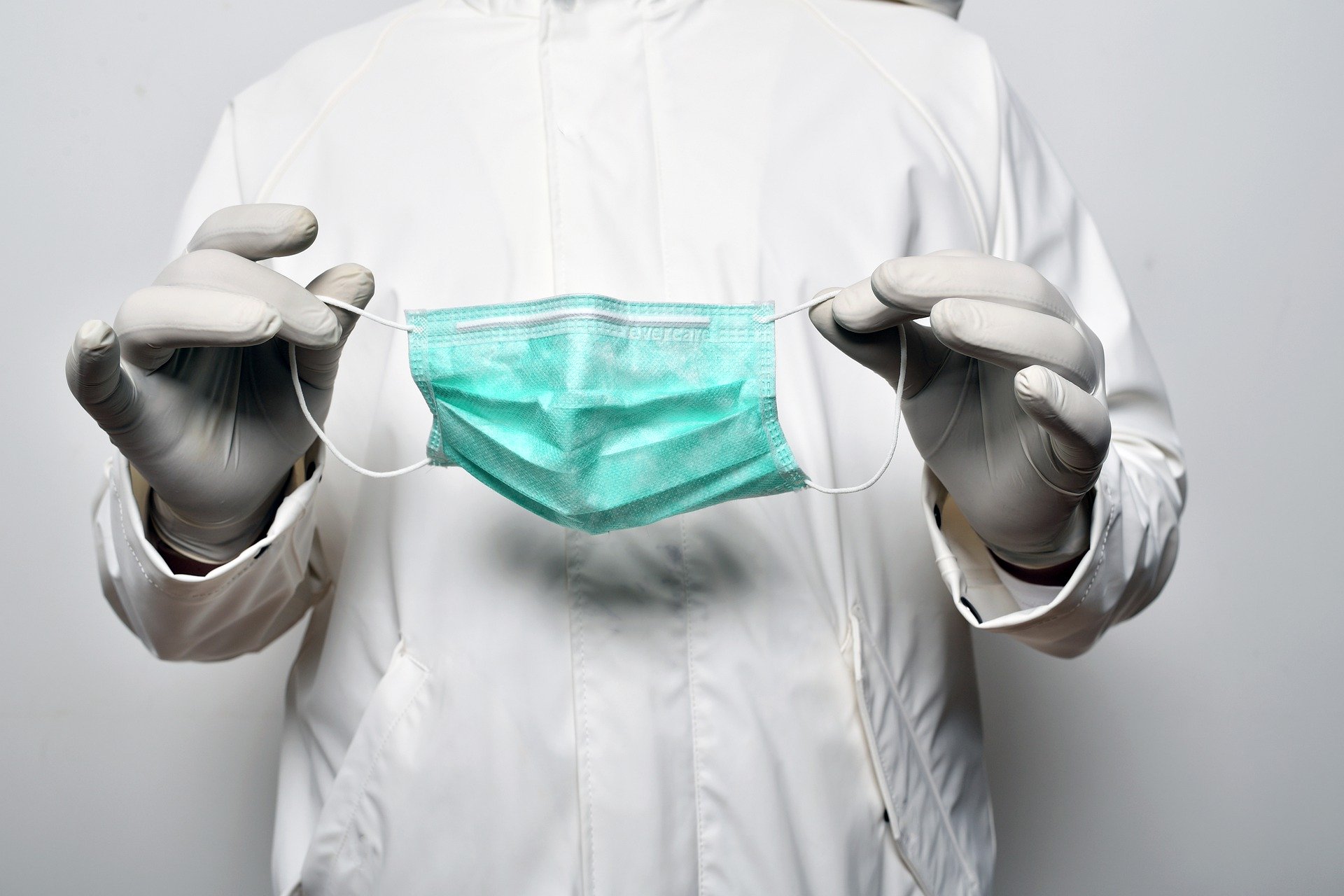
O enfermeiro diante da burocracia da qualidade e produtividade no ambiente hospitalar
Resumo:
The role of the nurse as a hospital administrator is a complex task that aims to implement actions for profit and development in institutions, optimizing bureaucracy, promoting resources to improve productivity with quality. This study describes qualitatively the theories of administration, resources used to reduce bureaucracy, increasing quality management, the role of nurses as hospital administrators, with a new managerial approach.
Keywords: nurse, hospital administration, quality, productivity.
Expandir Resumo
Acessar Texto Completo



